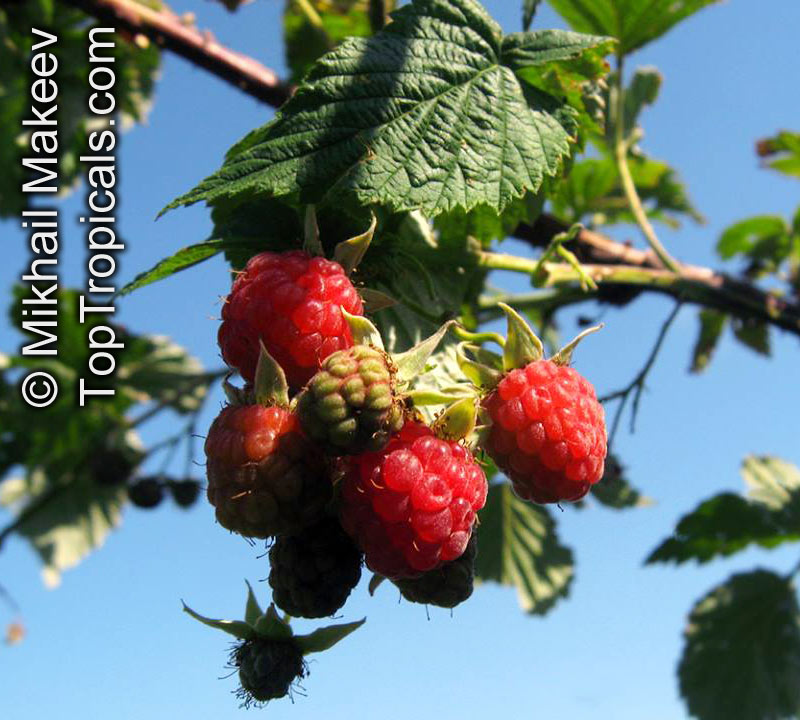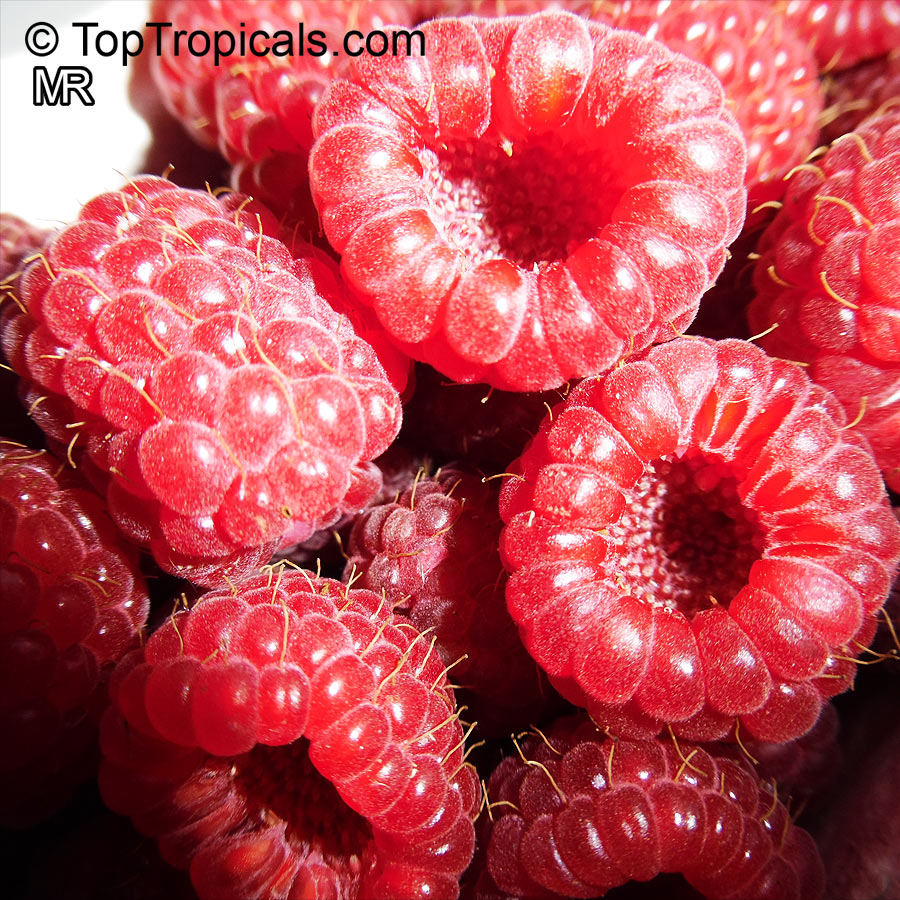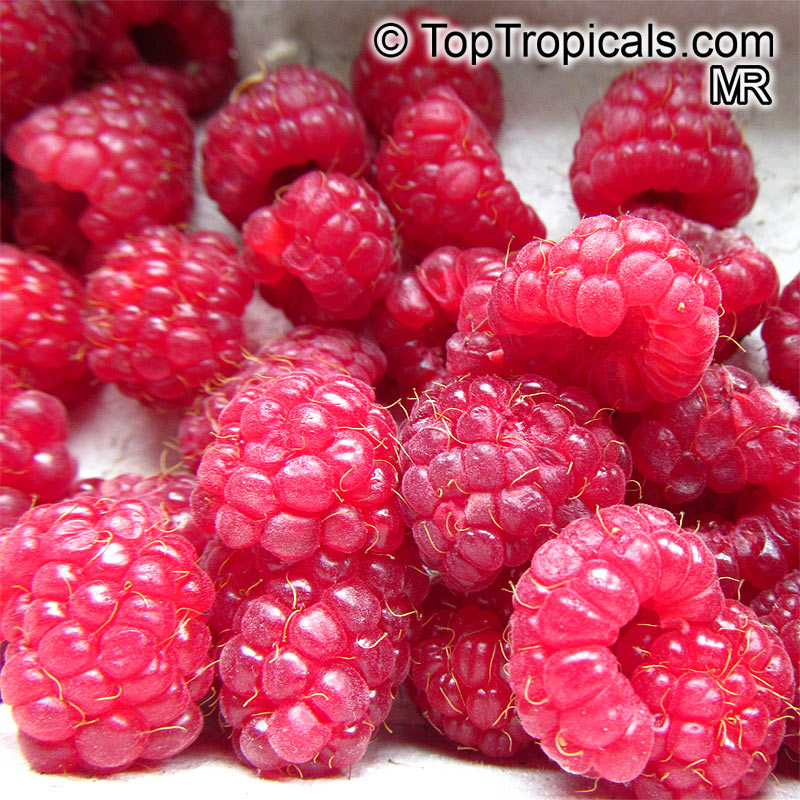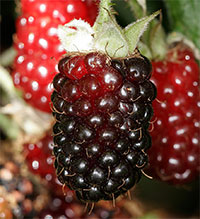Pictogram Guide · Mouse over pictogram for definition
Rubus idaeus
Tropical Raspberry, Heritage Red RaspberryFamily: Rosaceae













Rubus idaeus, commonly known as Tropical Raspberry, is a large shrub that can reach up to 5-10 feet tall. It is a deciduous plant and grows best in full sun but can tolerate semi-shade. It requires regular watering and is a great option for those looking to attract butterflies and hummingbirds to their garden.
This attractive shrub is known for its abundance of pink, white, and off-white flowers that bloom from late April to June, and its sweet and aromatic raspberries that ripen in mid-summer to fall. Its raspberries are dark red with a mild flavor, making them perfect for fresh eating, freezing, jams and jellies. The raspberries are usually thorny, however, some varieties are thornless.
Apart from its beauty, Tropical Raspberry is also known for its ethnomedical uses and medicinal properties. The fruit is high in vitamins and minerals, including Vitamin A, Vitamin B, Vitamin C, and Vitamin E, and may be used for calming coughs, colds and sore throats. It is also known for being a good source of dietary fiber, calcium, and iron. It can produce countless fruits in one season and is a great crop for gardens with cooler climates.
To ensure optimal fruit production, it is important that this shrub is fertilized when blooms begin, and that all fruited canes are cut down to ground level at the end of the season. With proper care, this plant can give your garden a beautiful and bountiful harvest year after year.
Similar plants:
- Rubus caesius (Blackberry, Dewberry)
- Rubus fruticosus (Blackberry, Dewberry )
- Rubus hybrid (Brazos Blackberry, Black Raspberry)
- Rubus illecebrosus, Rubus sorbifolius, Rubus yakusimensis (Balloon Berry, Strawberry Raspberry, Japanese Raspberry)
- Rubus laciniatus (Cutleaf Evergreen Blackberry)
- Rubus niveus, Rubus albescens (Mysore Raspberry, Ceylon Raspberry,Hill Raspberry)
- Rubus odoratus (Purple-flowering Raspberry)
- Rubus sanctus, Rubus ulmifolius subsp. sanctus (Holy Bramble, Burning Bush of the Bible)
- Rubus sp. (Raspberrie, Blackberrie, Dewberrie)
- Rubus ulmifolius (Elmleaf Blackberry)
The plant traced back to grower Rudolph Boysen, who obtained the dewberry-loganberry parent from the farm of John Lubben. Boysenberries grow on low, trailing plants and are characterized by their soft texture, thin skins, and sweet-tart flavor. Very large, fragile, purple berry with few seeds. Although this variety is named thorn-less, there are truly no thorn-less Boysenberries. However, this variety has far fewer and smaller thorns than other varieties. USDA zones 5-10.
Recommended Fertilizer: SUNSHINE C-Cibus - Crop Nutrition Booster
SUNSHINE-Honey - sugar booster




